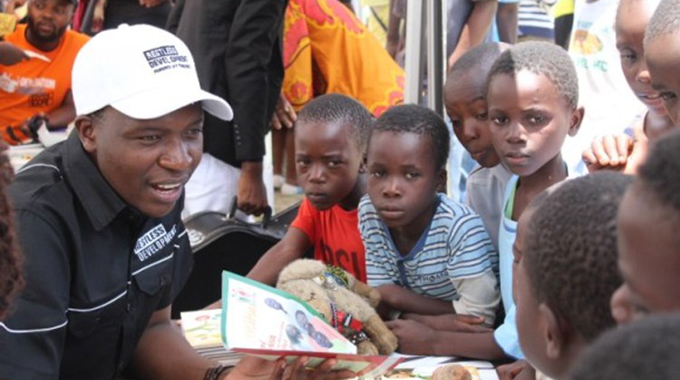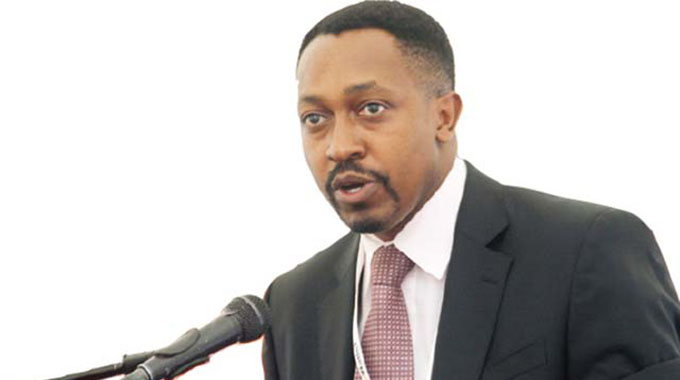Youth as partners, advocates in gender equality matrix

Prof Hubert Gijzen
Correspondent
The United Nations was founded in 1945 in the aftermath of a devastating world war, with the overarching aim to work towards a peaceful world with better living standards for all and respect for human rights.
On the 75th anniversary of the UN, I had great pleasure to engage last week to dialogue with youth on: “Youth as partners and advocates for gender equality”.
Gender equality is everyone’s business including for youth, men and boys. Let me unpack this further by addressing three key questions.
The first question is: how do we understand gender equality?
I believe that gender inequalities have largely arisen from a certain mindset. So, if it is a mindset issue, then we need to work on resetting the mind.
And the best chance of success is to work with youth, as they have an “open mind”. They are a driving force in accelerating change for the realisation of gender equality. Education and awareness raising are powerful tools to achieve that.
Interestingly, toilets can also be an indicator of gender inequality. Did you know that the US Senate did not have a ladies room until 1992? I guess this says something about who was expected to come to work. It says something about mindsets and stereotyping.
The overarching aim to achieve gender equality of course means that we need to address gender inequalities.
Gender inequalities can be extremely sharp. Did you know that:
95 percent of Fortune 500 chief executives are men;
In about 95 percent of all flights, the announcement “this is your captain speaking” is made by a man;
2/3 of the almost 800 million adults without basic literacy skills are women;
Only three out of every 10 researchers in sub-Saharan Africa is a women.
Also here in the SADC region we recognise a number of challenges: gender-based violence, domestic violence, child marriage, early and unwanted pregnancy, and the prevalence of HIV/AIDS just to name a few.
Some figures:
In Zimbabwe almost 25 percent of young women were married by age 18;
In Mozambique this is as high as 48 percent;
In Malawi, in the age group 15- 19, girls are 10 times mere likely to be married than boys;
In Zimbabwe 32 percent of girls aged 18-24 experienced sexual violence prior to turning 18 years.
Also the sharp discrepancies in HIV/AIDS are alarming:
The good news is that HIV prevalence has been declining among all age groups in Zimbabwe, but it remains almost twice as high for women aged 15 to 24 (6,1 percent) than for men the same age (3,2 percent).
Why youth?
The Africa Union “Agenda 2063” envisions (and I quote from the document) “a prosperous Africa based on inclusive growth and sustainable development (SD); An Africa where development is people-driven, unleashing the potential of women and youth” . . . The Agenda 2063 talks about a “skills revolution”, and this indeed puts youth at the centre, and as a driver for sustainable development.
We all agree; the coming decades must be a turning point for Africa’s sustainable development, and the pre-conditions for this to happen are all there.
The region is blessed with a wealth of natural, cultural and mineral resources, and Government leaders have repeatedly committed to pushing these resources higher up in the value chain, as a way to accelerate sustainable economic growth, employment and wellbeing for all people in Africa.
However, I wish to emphasise that — to make this strategy a success we must add yet another important resource into this equation — YOUTH.
With the highest percentage of youth of any region in the world, Africa has enormous potential to leapfrog on the road towards SD.
The aspirations and achievements of young people will shape Africa’s future. Their force, creativity and innovation power, their skills and inspirations represent one of the critical drivers for accelerating progress on sustainable development, and gender equality.
But this will happen only if we meet two essential conditions:
We need to fully engage youth, not merely as a target audience but as full participants and drivers in shaping the future we want for all, and;
We need to ensure we mobilise ALL youth, young men and women, boys and girls. And ALL means ALL, including youth in rural areas, youth with disabilities or marginalised because of their socioeconomic, or ethnic backgrounds.
Let us imagine what we can achieve towards SD in Africa, if we engage all youth, and let us imagine what we can achieve towards gender equality, if all youth believe, advocate, and practice this principle in their own life!
And most of all, gender inequality is not right. The ambitions to transform our world towards sustainability are enormous and immensely complex; it requires all hands on deck, it needs all brains to share their ideas and innovation power.
Gender inequality means we do not use effectively half of mankind’s potential, its energy, ideas, and innovation power. A bicycle has two wheels, gender inequality means we drive it using one.
With practice you can do this for a short while, but you won’t get far. So gender inequality indeed is unfair, ineffective and inefficient. And lastly, and maybe most pressing question:
What is the role of men and boys?
Of course, gender is not the same as women yet most gender initiatives focus on women. In this meeting we wish to focus on men and boys. Why?
Well let’s face it — where gender inequalities exist — men are part of the equation.
I ask: Child marriage — by whom?
Early and unwanted pregnancy — by whom?
Gender-based violence by whom?
Women HIV positive from whom?
So, men indeed are part of the equation. Men are part of the problem, so they need to be part of the solution.
As a member of He4She ambassadors group here in Zimbabwe, I would like to specifically call on boys and young men to become strong He4She advocates.
Also, and in a more general sense, and after working for over three decades in international cooperation for sustainable development, I question why mostly our work is focused at end of the pipe:
When its droughts or floods — we provide humanitarian response (but forget to invest in resilience building and better water management);
When there is conflict — the response is peace keeping (why not more peace building and conflict prevention);
The global combat to HIV — the overwhelming part of resources go to treatment (why not more for prevention);
We act when the problem is there; and this is hugely expensive and inefficient. Therefore, my call to focus more on prevention.
And youth are indeed much better placed to help develop and implement a prevention agenda.
Similarly, programmes on gender hardly focus on men. By focusing on men and boys and by promoting positive masculinities and male identities we could strategically focus on prevention and thereby effectively contribute towards gender equality.
Youth are a UNESCO priority group.
We believe that positive social change can only come about with quality education and skills development, access to scientific knowledge, culture and information, and active commitment towards a culture of peace and gender equality.
As the UN, we stand ready to support the government and all stakeholders, and we hope that together, we can ensure a transition towards a sustainable and gender balanced future for Africa and for the world at large. I end by saying to all of you connected: please join us to make this happen.
Professor Hubert Gijzen is UNESCO regional director for Southern Africa and Representative to Zimbabwe and SADC.










Comments